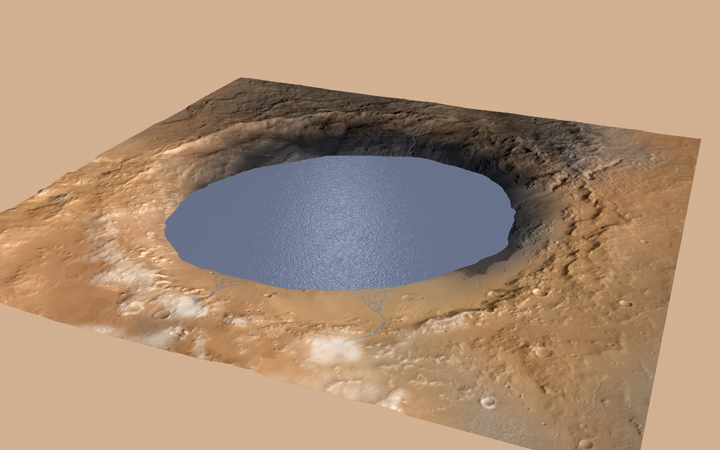Billions of years ago, you could have gone for a swim on Mars.

A new study from NASA has concluded that between 3 and 4 billion years ago, the planet’s surface was home to lakes and streams. And these weren’t fleeting reservoirs of water.
READ MORE: There’s water on Mars. Now what?
“Observations from the rover suggest that a series of long-lived streams and lakes existed at some point between about 3.8 to 3.3 billion years ago, delivering sediment that slowly built up the lower layers of Mount Sharp,” said Ashwin Vasavada, Mars Science Laboratory project scientist at NASA’s Jet Propulsion Laboratory in Pasadena, California, and co-author of the new Science article to be published Friday.
The findings expand on a study released last December which concluded that Mount Sharp — a five-kilometre high mountain at the centre of Gale Crater, and the location of Curiosity — was built by sediment that accumulated in the crater over tens of millions of years. The findings supported the theory that long-lasting lakes existed at one point.
“It’s clear that the Mars of billions of years ago more closely resembled Earth than it does today,” said Michael Meyer, lead scientist for NASA’s Mars Exploration Program at NASA Headquarters in Washington. “Our challenge is to figure out…what happened to that wetter Mars.”

Get daily National news
This new study concludes that the bottom layers of Mount Sharp were filled by rivers and lakes over a period of less than 500 million years.
These new discoveries also raise many questions. Scientists need to better understand the source of the water. In order to have had flowing water, Mars’ atmosphere had to have been thicker and a warmer climate than what has been theorized.
There is the chance that snowfall and rain could have supplied the lakes, and some scientists have even theorized that a large ocean north of the crater once existed. However, neither of these theories explain how water existed on the surface for such a long time.
On Sept. 28, NASA announced that new findings from its Mars Reconnaissance Orbiter suggested that the planet has flowing salty water in the summer.


Comments